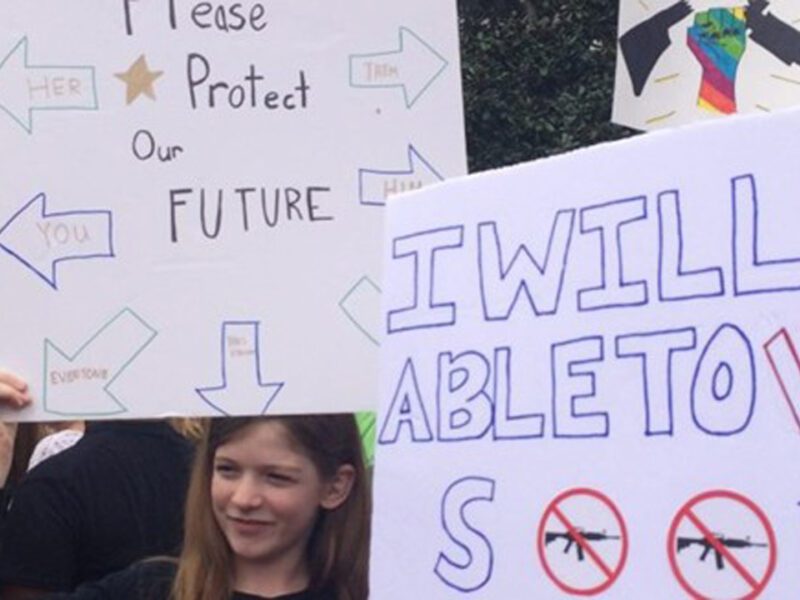Why Teachers Don’t Use the High-Quality Instructional Materials They’re Given
The 74 Million | By David Steiner | November 12, 2024
An increasing number of districts across America are rightly procuring so-called high-quality instructional materials (HQIM) for use in their schools. These English Language Arts and math materials meet grade-level state standards for skills and knowledge and are thus rated “green” (fully meets expectations) by EdReports. While these materials vary greatly in the quality of included texts or support of conceptual mathematical reasoning, these materials are unquestionably an improvement on the plethora of home-grown curricula. They are vastly preferable to teachers acting as instructional DJs, spending hours a week concocting idiosyncratic playlists of instructional materials. When teachers use HQIM effectively and continuously — as they did back in 2016 in Duval County, Florida, or recently in Caesar Rodney, Delaware — students show major learning gains.
But overall, results have been modest. In math, researchers have found no overall gains when districts adopted HQIM materials. Evidence of major outcomes in ELA are also lacking: Louisiana and Tennessee, which lead the nation in the adoption of HQIM, show mixed NAEP results. Why aren’t there stronger positive outcomes? Because most teachers simply don’t use the new materials for most instructional purposes. They might pull a quiz or a homework assignment from the curriculum, but when it comes to daily instruction, they water it down, mix it with stuff from the internet or skim over material by giving students few opportunities to grapple with the rigorous content.
Telling teachers to just do it — teach the darn curriculum — isn’t working. To address the situation, school districts are spending some $18,000 per teacher per year on professional learning, an increasing portion of which goes to curriculum-related instruction. The plausible idea is that if teachers are given adequate support to understand the new materials and present them effectively, resistance to using them will diminish.
There isn’t much strong research on the impact of this type of professional learning. One rigorous study shows a very modest effect, while a review that analyzed previous research found “small to moderate positive impacts.” This is because at the core of resistance is a mindset: Teachers don’t believe their students can manage the rigor of grade-level HQIM instruction — thus, the avoidance and watering down. The general response (especially from the publishers of these materials) has been frustration. Perhaps teachers don’t trust themselves to handle the material, or perhaps they don’t like the curriculum because they haven’t tried it (to paraphrase a British beer commercial from my youth) — or they just need more curriculum-integrated professional learning.
While there is surely some truth to these responses, I think they miss a key point — teachers are often behaving rationally. In 2022, 26% of eighth-graders performed at or above proficient on the NAEP in math, and 31% in ELA. While NAEP standards are more demanding than those in most states, what this means (conservatively) is that more than half of the students in an average American public school classroom lack grade-level skills and content knowledge. In the inner cities and many rural communities, that proportion is much higher: In the economically troubled city of Baltimore, where I live, the proficiency rate for eighth graders on the math NAEP in 2022 was 8%.
If you were a teacher faced with 25 13-year-olds whose knowledge of math and ELA ranged from one to three years below grade level, would you readily teach materials that assumed grade-level competence?
School districts in Baltimore and across the country aren’t blind to this reality. For many years, they have tried to help underperforming students through remedial education that attempts to teach what wasn’t mastered in previous years. This effort has had various labels — for example, MTSS (Multi-Tiered System of Supports) or RTI (Response to Intervention). It usually involves grouping students into what is called Tier 2 or Tier 3 and then giving them various doses of remediation. There is no rigorous research that suggests this effort has succeeded at scale.
More recently, this approach has been adopted for the use of HQIM in the classroom (also called Tier 1 instruction). The idea, reasonable on its face, is that weaker students should be given extra time, usually through pulling them out of arts or even social studies courses, to master the materials.
Here is a quick sketch of how the approach works — in theory. Students take diagnostic assessments a week or two before the start of a new HQIM unit. In math, these test students’ mastery of the prerequisite skills that will make effective learning in the forthcoming unit possible. In ELA, the assessment will test for key vocabulary and background knowledge without which the forthcoming text(s) will be inaccessible. Then, the results are given to the Tier 2 teacher, who focuses on preparing the students with “just in time knowledge” — what students must know to successfully understand their upcoming Tier 1 HQIM unit.
But in practice, these efforts underdeliver. And that’s not simply due to the challenges of organizing the student groupings and the instructional differentiation; it’s because there simply aren’t effective assessments to do the job. A state test administered the previous year is largely useless (and most teachers are ignorant of how their students performed). Nationally normed tests such as i-Ready and MAP aren’t designed for educators to be able to translate results into curriculum content. A previous end-of-unit assessment (if the teacher even gave it) might work if the new skills and knowledge in each new curriculum build directly on what students had successfully learned in the previous unit. However, ELA units often introduce completely new subjects, and math curricula are full of skills that aren’t used in subsequent units and grades. The Tier 2 teacher is left trying to guess what to teach — and too often uses materials that aren’t even from the same curriculum as the Tier 1 instructor is using.
In short, there is too little connection between what students are being taught in Tier 2 instruction and what they need to know to be ready for Tier 1 HQIM material. Teachers and schools are rightly trying their best in adverse circumstances: In Houston, students are tested during their Tier 1 classes and then given appropriate Tier 2 teaching for the second part of the 90 minutes, an approach requiring extremely tight planning and many hours pre-analyzing every unit to design the tests and instruction. Superbly led districts and schools (regular and charter) create time for such analyses. But in most districts, Tier 1 instructors are given some exposure to a curriculum’s content and then told to differentiate their teaching on the fly, remediating while simultaneously teaching the grade-level material.
What teachers and students need is urgent action from the curriculum publishers (and AI-based providers such as Coursemojo and Brisk Teaching). They should be providing short, focused pre-unit diagnostics that are integrated with the most-used curriculum. These short quizzes will pinpoint the material Tier 2 instructors need to highlight. The bottom line: If Tier 2 classes across the United States were focused on teaching what students most need to know to access their forthcoming Tier 1 curriculum unit, Tier 1 teachers would rightly have more confidence that their students could manage Tier 1 HQIM. Instead of watering down that material, they could teach it, thus fulfilling the considerable promise of the new high-quality curriculum.
This won’t be a panacea. There’s no way to ensure that a child who is two years behind will be ready for next week’s grade-level instruction — a problem that goes back to the nation’s pre-K universe, with its uneven access and lack of quality control. But it is possible to give that child a chance. Currently, Tier 2 teachers are flying blind — wasting hundreds of instructional hours, unable to provide students with any chance of benefiting from HQIM. And Tier 1 instructors? Many will go on watering down those materials, knowing how few students are ready to learn rigorous, grade-level content.






